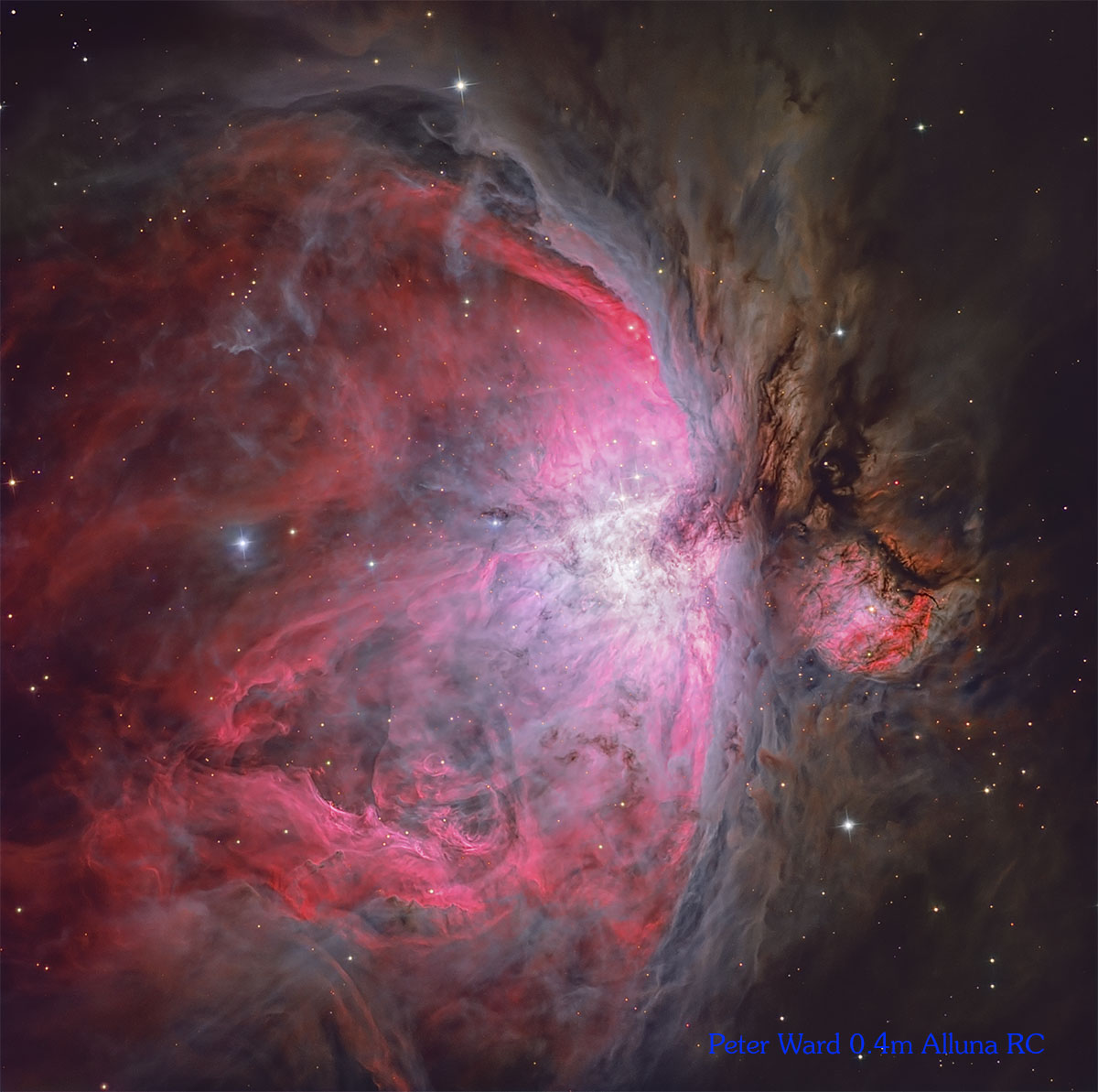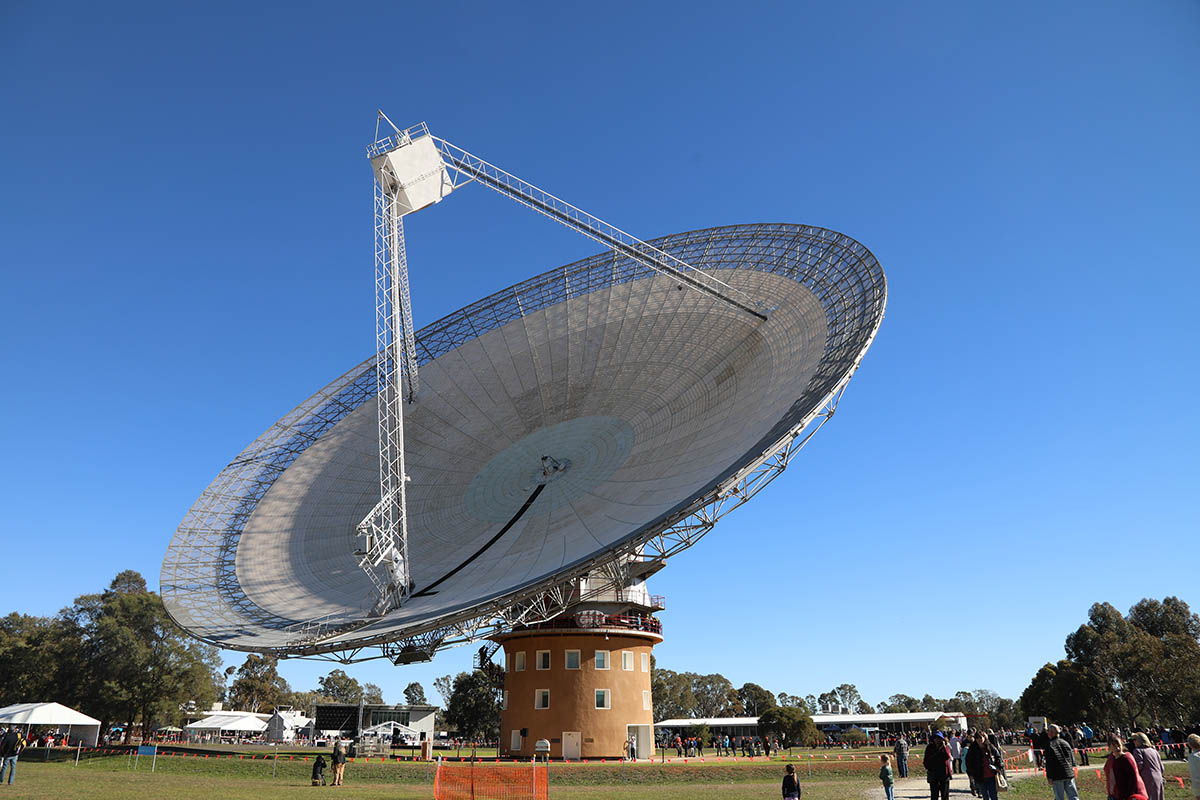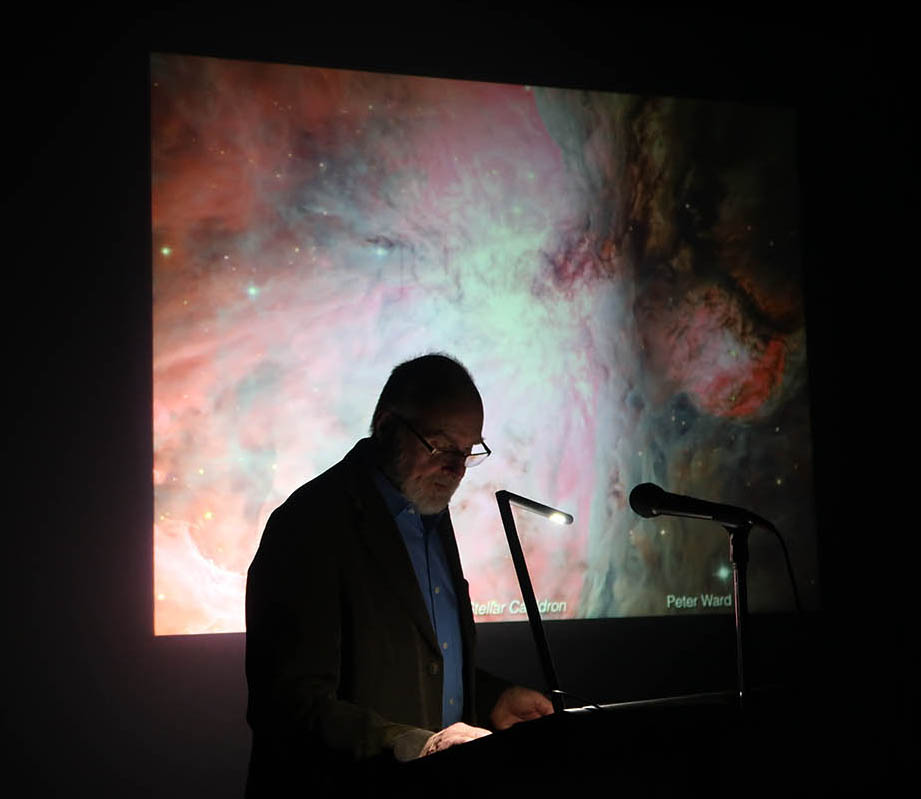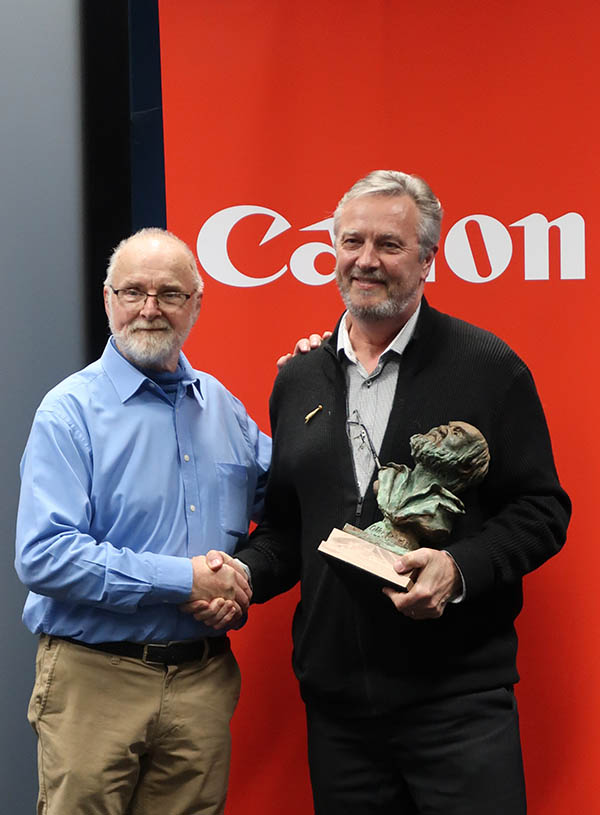
2019 CWAS David Malin Awards
Joint overall and Deep Sky winning image
"Stellar Cauldron"

"The Orion Nebula is one of the most scrutinized and photographed objects in the night sky,
and is among the most intensely studied celestial features.
The nebula has revealed much about the process of how stars and planetary systems are formed from collapsing clouds of gas and dust.
Astronomers have directly observed protoplanetary disks, brown dwarfs, intense and turbulent motions of the gas,
and the photo-ionizing effects of massive nearby stars in the nebula". (Wiki)
Image details: Camera SBIG STX16803, FW5 and AO-L adaptive optics
(Exposure time approximately 4hours H-alpha and 4 hours RGB)
Optics: Alluna Optics RC16 and AFFC field corrector
Mount: Software Bisque Paramount PMEII
Image by Peter J Ward copyright 2019 not to be used without permission

In conjunction with the 50th anniversary of the Apollo 11 moon landing
the Central West Astronomical Society held their 16th CWAS/David Malin awards at the Parkes 64 metre Radio Telescope.
The "David Malin awards" have grown to be the premiere, not just astrophotography, but photography exhibtion in Australia.
Numbers have increased yearly, with the 2018 exhibition having been seen by over 200,000 individuals.


Above Dr David Malin (left) & Dr Malin presenting the overall trophy to Peter Ward (right)
Dr David Malin's (OAM) citation "This is a vivid and astonishing rendition of the well-known Orion nebula.
While it's the vivid red of the ionized hydrogen that catches the eye,
the picture also reveals the subtle texture and shading of the dusty regions around and within it.
This is one of the finest images of this object that I have ever seen.”
Images copyright P & L Ward 2019 all rights reserved
and HST data copyright ESA/NASA Hubble

Can you see all 26 grey scales above?